
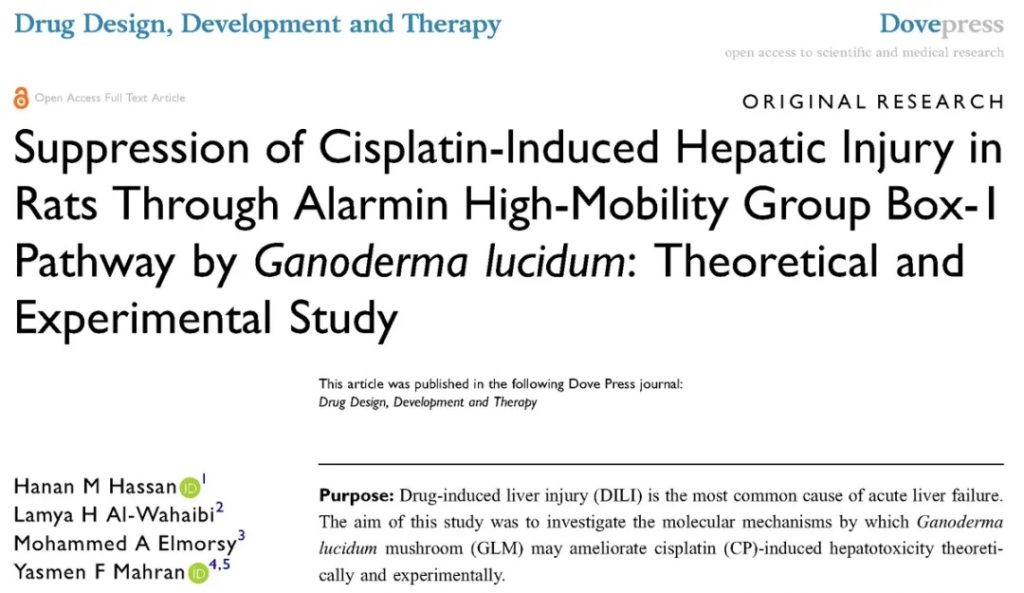
化学療法は肝臓と腎臓を損傷し、霊芝は (とも呼ばれますマンネンタケ 霊芝とか) 肝臓と腎臓を保護します.
できるマンネンタケ 化学療法による肝臓と腎臓の損傷に耐える?
デルタ科学大学薬学部のハナン・M・ハッサン教授で構成されるチーム & エジプトの技術とエジプトのアイン・シャムス大学薬学部のヤスメン・F・マーラン教授はシスプラチンを使用した, 最も一般的な伝統的な化学療法薬, ~の可能性をテストするマンネンタケ 肝臓と腎臓の細胞をシスプラチン損傷から保護する.
彼らの研究結果は 2 つの記事に分かれています: 1つは肝臓を保護し、もう1つは腎臓を保護します. 『ドラッグデザイン』に掲載されました, 6月と7月に「開発と治療」と「酸化医学と細胞寿命」 2020, それぞれ.
抗酸化物質, 抗炎症作用と抗アポトーシス作用マンネンタケ 明らかに多くの酸化ダメージをブロックできる, シスプラチンによって誘発される炎症性損傷と細胞アポトーシス, そしてそのような保護は肝細胞や腎臓細胞にも適用可能です. これは、その二重の薬効を強調するだけではありません。マンネンタケ だけでなく、癌の化学療法に対する実行可能な補助的な保護方法も提供します.
この記事が長くなりすぎないようにするには, 著者がその役割を紹介しますマンネンタケ これらの科学的根拠に基づいたデータと証拠が、化学療法の副作用を軽減しようとする友人たちにさらなる自信をもたらすことを願って、この側面について 2 部構成で説明します。.
パート 1マンネンタケ 肝臓を保護する vs. シスプラチン肝毒性
研究者らは使用した場合と使用しない場合の違いを比較しましたマンネンタケ 健康なラットの6つのグループにおけるシスプラチン治療中の、異なるグループによる肝損傷に対する保護の違いマンネンタケ 管理方法。彼らです:
◆コントロールグループ (続き): 何も治療を受けないグループ;
◆マンネンタケ グループ(GL): シスプラチンを注射しないが食事をするグループマンネンタケ 毎日;
◆シスプラチングループ(CP): シスプラチンを注射するだけで食事をしないグループマンネンタケ;
◆日常グループ (毎日): シスプラチンを注射して食事をするグループ霊芝ルシダム 毎日;
◆隔日グループ (EOD): シスプラチンを注射して食事をするグループマンネンタケ 隔日;
◆腹腔内グループ (i.p): シスプラチンを注射し、シスプラチンを腹腔内注射するグループG明瞭な陰皮.
シスプラチンを投与された人は全員、腹腔内にシスプラチンを注射されました。 12 急性肝障害を引き起こす実験初日のシスプラチン mg/kg; 腹腔内注射を受けた方マンネンタケ 実験の2日目と6日目に1回注射されました.
のマンネンタケ 実験に使用されたものにはトリテルペンなどの有効成分が含まれています, ステロール, 多糖類, ポリフェノールとフラボノイド. のマンネンタケ 動物実験で与えられた, 経口で摂取するか注射で摂取するか, 1日あたりの投与量で計算されます 500 mg/kg.
(1) マンネンタケ 肝細胞傷害を軽減する
後 10 日, シスプラチンがラットの血清中の肝炎指数と総ビリルビンレベルを上昇させることがわかります。. これらはすべて肝細胞損傷の兆候です. しかし、もしマンネンタケ 同時に関わっている, 増加した値は大幅に減少する可能性があります (形 1).
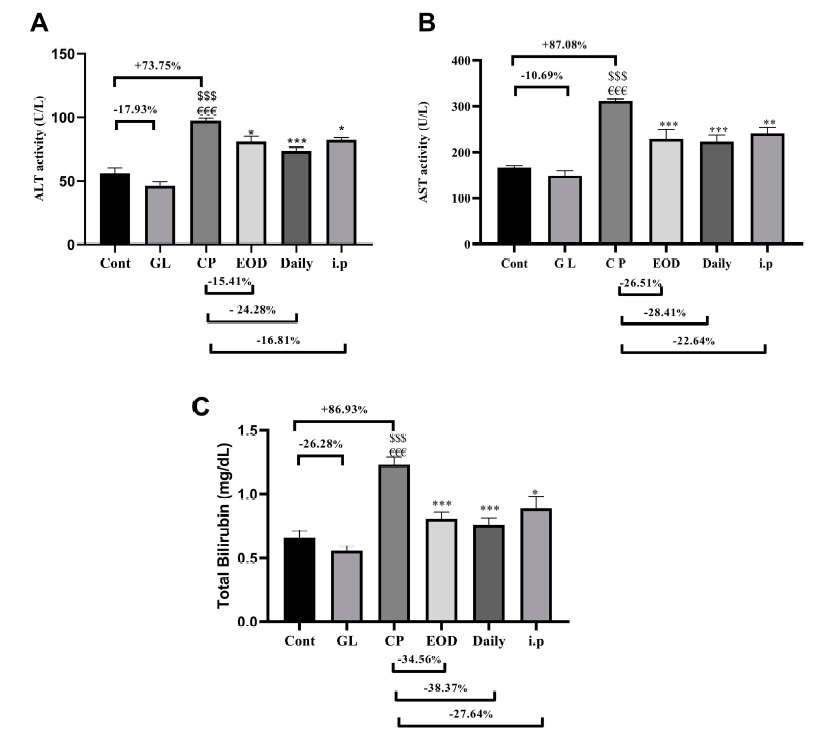
データソース/医薬品開発者. 2020; 14:2335-2353.
形 1 シスプラチンの効果とマンネンタケ 肝障害の指標について
肝臓組織切片を顕微鏡下に置きます, シスプラチンが肝うっ血を引き起こす可能性があることがわかります (心臓に戻るべき血液が滞り、肝静脈内に停滞する), 細胞変性 (液胞が現れる, これは細胞損傷の最も初期の変化です), アポトーシスとネクローシス, ただし、これらの状態は次の方法で緩和することもできます。マンネンタケ.
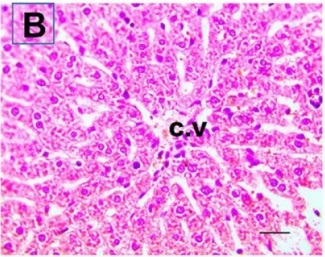 コントロールグループ (続き) | 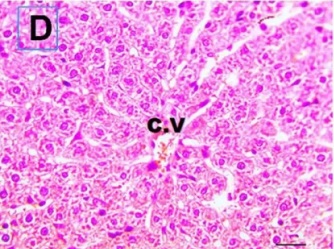 霊芝グループ (GL) |
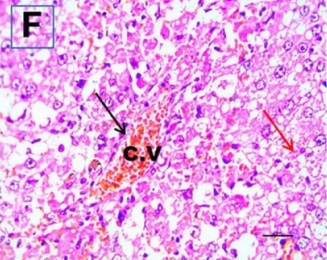 シスプラチングループ (CP) | 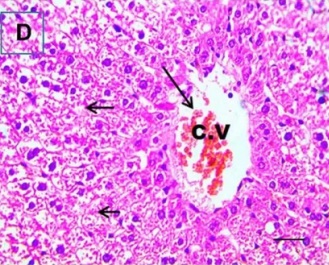 隔日グループ (EOD) |
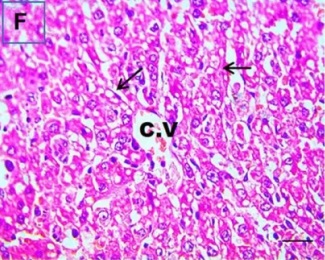 日常グループ (毎日) | 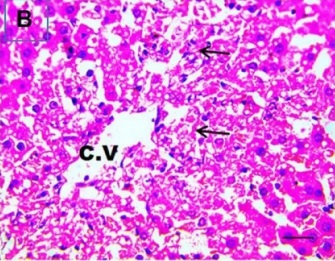 腹腔内グループ (i.p) |
| 履歴書. 中心静脈を指します。矢印は肝うっ血または肝細胞変性の領域を指します. データソース/医薬品開発者. 2020; 14: 2335-2353. | |
形 2 シスプラチンの効果とマンネンタケ 肝細胞について
(2)マンネンタケ 肝細胞の抗酸化能力を強化します
この記事では、肝臓組織の各グループが受ける酸化的損傷をさらに比較します。. 観察指標は2つあります: MDA(マロンジアルデヒド), フリーラジカルによる細胞膜の破壊後に形成される生成物, そしてH2○2 (過酸化水素), 抗酸化酵素によるフリーラジカルの代謝後に形成された中間生成物.
これらの製品は両方とも、フリーラジカルの酸化特性を持ち、本当に「解毒」する前にさらに処理する必要があります。, したがって、それらの量は、肝臓組織が「苦しんでいる」、「苦しむ」という酸化的損傷を私たちに伝えることができます.
明らかに, シスプラチンは、肝臓組織に大きな酸化的損傷を引き起こします, しかし、場合マンネンタケ 同時に治療に関与しています, このような損傷を減らすことができます (形 3).
抗酸化酵素の濃度の変化があるため (芝とgsh) 各グループの肝臓組織と酸化的損傷指標の変化は、まったく逆の傾向を示しました, それはそれを推測できますマンネンタケ肝臓組織の抗酸化能力を高め、「抗酸化酵素の増加」により損傷を減らします.
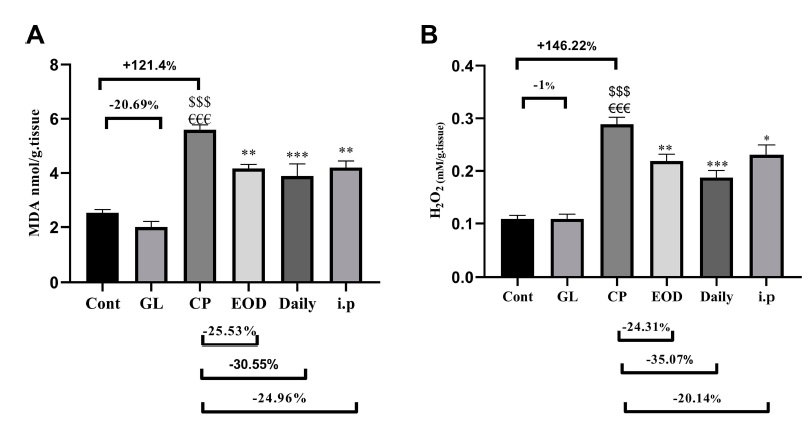
図3シスプラチンの効果とマンネンタケ 肝臓組織の酸化的損傷について
(3)マンネンタケ 肝細胞の抗炎症能力を高めます
シスプラチンは、DNAに損傷を与え、多数のフリーラジカルを誘導することにより、細胞の生存を脅かします; 圧力下の細胞は、炎症反応を調節するマスタースイッチNF-KBをオンにします, 細胞に腫瘍壊死因子を合成して放出するように促します (TNF-α) 炎症反応の最初の波を活性化し、免疫のためのアラームを鳴らす他のサイトカイン.
その後すぐに, 酸化的損傷または炎症によって殺された細胞は、別のサイトカインを放出します, HMGB-1, より多くの免疫細胞を活性化する, 炎症の波を引き起こす.
炎症が続くと、, 順番に, 酸化的損傷を強化しますが、より多くの細胞を死滅させます, さらに、炎症と修復が繰り返される過程で肝臓組織が徐々に線維化を引き起こすこともあります。.
幸いなことに, まるでマンネンタケ シスプラチンによって引き起こされる酸化損傷を軽減することができます, 動物実験でもシスプラチンとマンネンタケ 炎症スイッチNF-kBの活性化を阻害できる, 炎症を促進するTNF-αとHMGB-1を減少させる, 同時に肝臓組織内の抗炎症性サイトカインIL-10を増加させます。 (形 4).
一緒に撮った, これらの効果は炎症を抑制するだけでなく、コラーゲンの沈着を減少させ、肝線維化の進行を防ぎます。 (形 5).
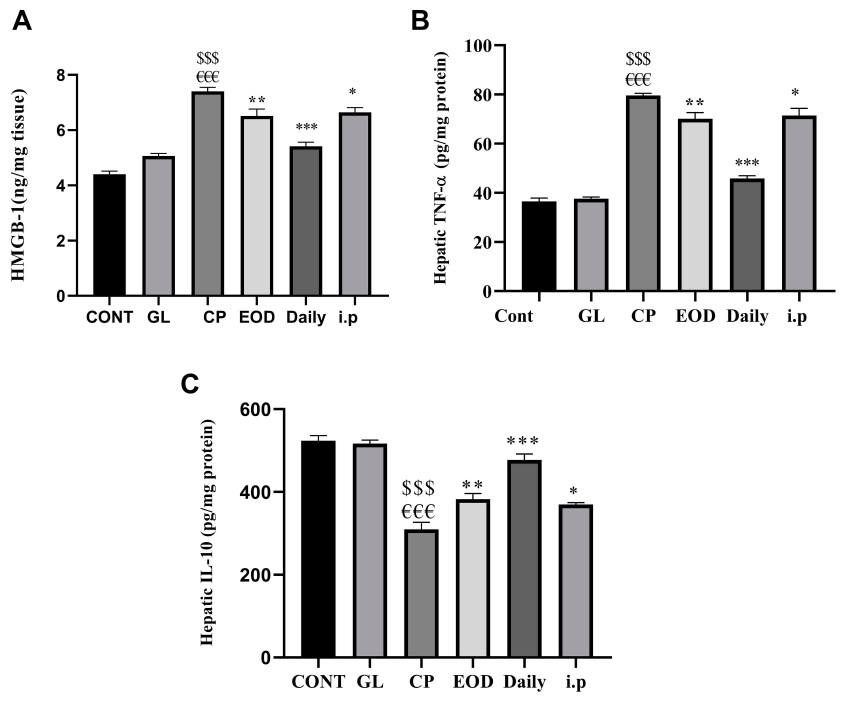
データソース/医薬品開発者. 2020; 14: 2335-2353.
形 4 シスプラチンの効果とマンネンタケ 肝臓組織の炎症について
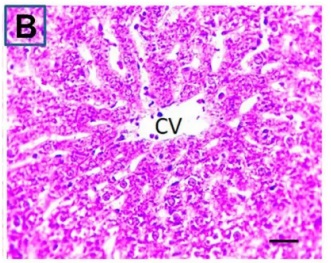 コントロールグループ (続き) | 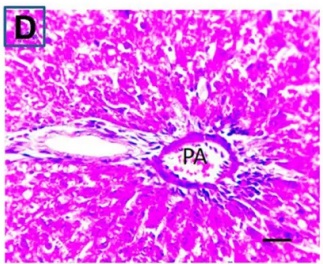 マンネンタケ グループ (GL) |
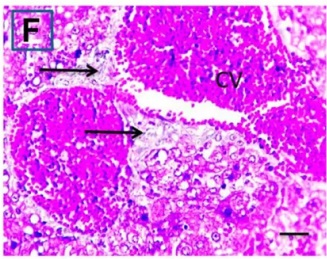 シスプラチングループ (CP) | 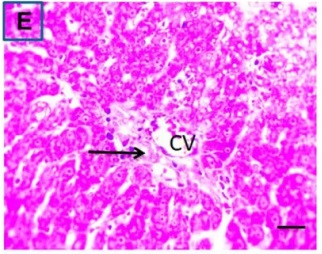 隔日グループ (EOD) |
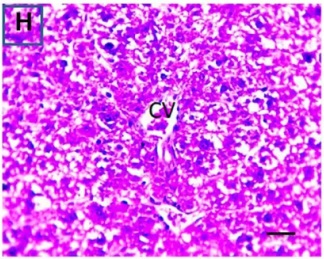 日常グループ (毎日) | 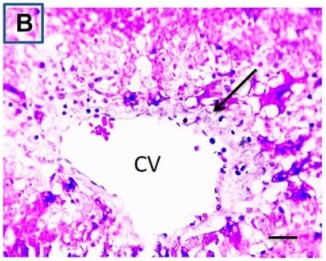 腹腔内グループ (i.p) |
| 矢印はコラーゲンの沈着領域を示しています. | |
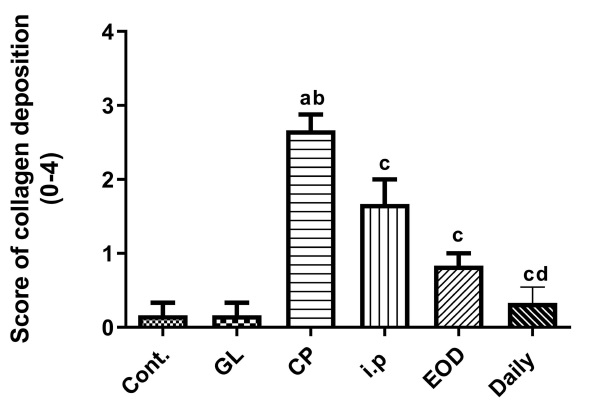
データソース/医薬品開発者. 2020; 14: 2335-2353.
形 5 肝線維症に対するシスプラチンと霊芝の効果
(4)マンネンタケ 肝細胞の抗アポトーシス能力を強化します
酸化的損傷または炎症による損傷によるもの, シスプラチンは最終的に「アポトーシス」機構を活性化し、肝細胞を強制的に死滅させます。.
言い換えると, 肝細胞が最後の防御線を維持できる場合, 彼らは生き残る可能性が高く、肝障害の重症度を軽減します.
アポトーシスを制御するタンパク質分子は数多くあります. その中で, 最も代表的なものは: p53, アポトーシスを促進する可能性がある, Bcl-2, アポトーシスを阻害する可能性がある, そしてカスパーゼ-3, 最後の瞬間にアポトーシスを実行する.
研究者らが各グループの実験動物の肝臓組織を分析した結果によると、, マンネンタケ Bcl-2 の発現を促進するだけでなく、p53 およびカスパーゼ-3 の発現も阻害します。, 肝細胞に強力な抗アポトーシスエネルギーを提供できます.
(5) ガノデリ酸は、重要な抗炎症の役割を果たします
酸化抗酸化から, 抗炎症, 肝臓損傷の減少の実際のパフォーマンスに対する抗アポトーシス, 研究者はメカニズムをまとめましたマンネンタケ あなたの参照のために次の図にシスプラチン肝毒性を阻害する際に.
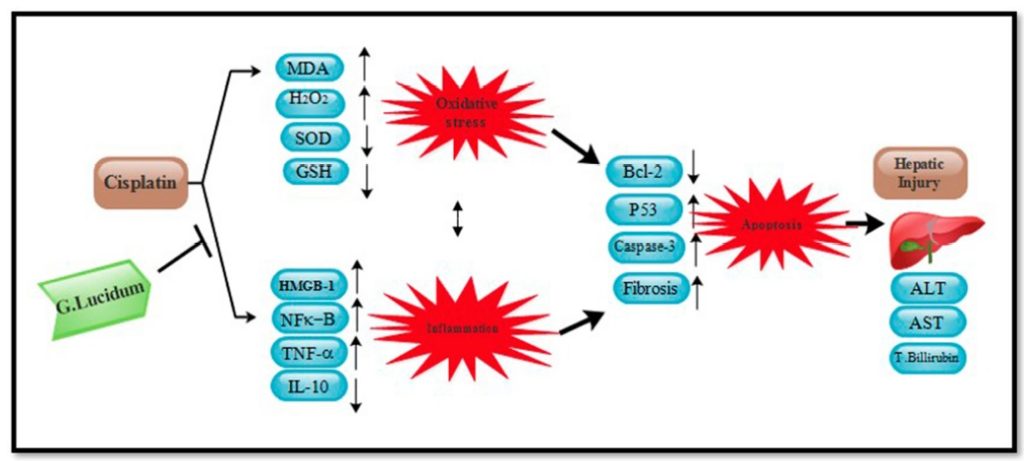
データソース/医薬品開発者. 2020; 14: 2335-2353.
形 6 シスプラチンの肝臓毒性の阻害におけるganoderma lucidumのメカニズム
この研究の終わりに, 「分子ドッキングシミュレーションシステム」の分析により、少なくとも 14 のトリテルペンのガノデリ酸マンネンタケ (以下の表に示すように) キーサイトカインHMGB-1に直接かつ効果的に結合できます, したがって、HMGB-1の炎症誘発性活性を不活性化します.
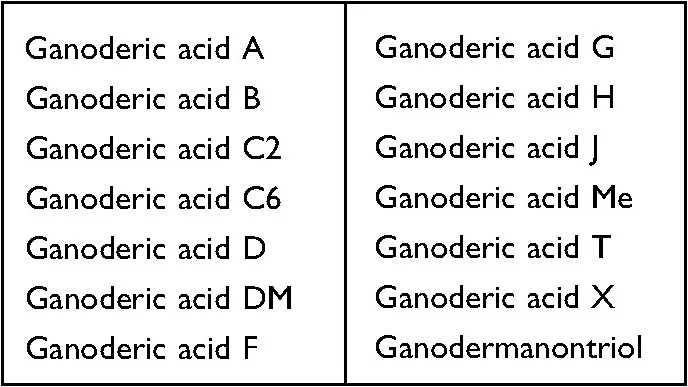
抗炎症は重要なメカニズムの1つであるためですマンネンタケ シスプラチン誘発性肝毒性を減らす, 「ガノデリン酸の豊富さ」が指標成分となっています。マンネンタケ 肝臓を守るために.
どのようなマンネンタケ 成分にはガノデリン酸が豊富に含まれている可能性があります? 過去の研究によると, それらは主に「」に存在することが知られています。マンネンタケ 子実体アルコールエキス』.
言及する価値があるのは、マンネンタケ 食べるだけのグループマンネンタケ 上記の実験結果では、対照群のラットとほぼ同じでした。, それを示しているマンネンタケ 消費しても安全性が高い.
加えて, 使用方法マンネンタケ も非常に重要です. この記事に示されているチャートを確認していただける場合は、, 「毎日グループ」が最も効果的であることを見つけるのは難しくありません。.
実際には, 毎日グループは、動物実験においてシスプラチンの肝臓および腎臓毒性を軽減するのに最も効果的です。,他と違うのはG陰皮症 明晰 グループ.
上記の良い効果は具体的にどのように表れますか? 「パート2」もお楽しみにマンネンタケ 腎臓を保護する vs. シスプラチン腎毒性」.
[データソース]
1.ハナン・M・ハッサン, 他. アラーミン高移動度グループ Box-1 経路を介したラットにおけるシスプラチン誘発性肝障害の抑制マンネンタケ: 理論的および実験的研究. ドラッグ・デス・デベル・サー. 2020;14: 2335-2353.
2.ヤスメン・F・マーラン, 他。マンネンタケ 上皮成長因子受容体シグナル伝達およびオートファジー媒介アポトーシスの阻害により、シスプラチン誘発性腎毒性を防止します. 酸化物とセル Longev. 2020. 土肥: 10.1155/2020/4932587.
終わり
著者について/Mさん. 呉廷耀
呉廷耀氏は直接報告しているマンネンタケ それ以来の情報 1999. 彼女はの著者です霊芝による治癒 (4月に人民医学出版社に出版 2017).
★この記事は著者の独占的な許可を得て掲載されています, 所有権はGANOHERBに属します
★上記作品は転載禁止です, GanoHerb の許可なく抜粋または他の方法で使用される
★作品の使用を許諾されている場合, 許可の範囲内で使用し、出典を示す必要があります。: ガノハーブ
★上記記載事項に違反した場合, GanoHerb は関連する法的責任を追及します
★この記事の原文はWu Tingyaoが中国語で執筆し、Alfred Liuが英語に翻訳しました。. 翻訳に齟齬があった場合 (英語) そしてオリジナル (中国語), 本来の中国人が勝つだろう. 読者に質問がある場合, 原作者に連絡してください, MS. 呉廷耀.
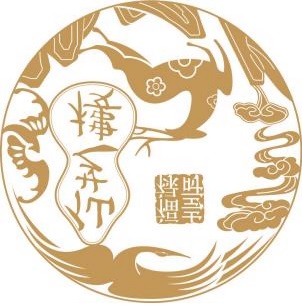
千年の健康文化を継承する
すべての人の健康に貢献する



